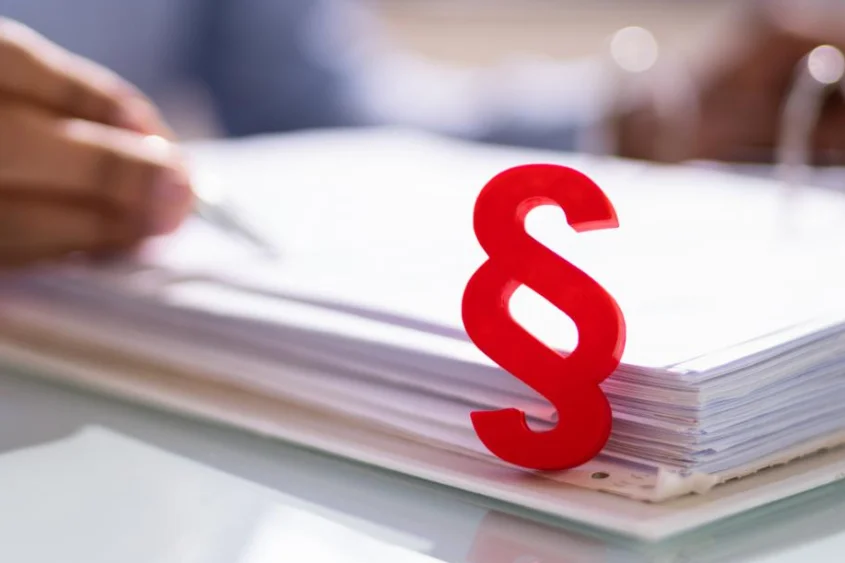Provisional Patent Application: Utilizing the One-Year Window to Develop Your Invention
- July 15, 2023
- By Sarita Thomas
- Read 12 minutes
Explore the world of provisional patent applications and their pivotal role in protecting intellectual property. This insightful article dives into the benefits, utilization of the one-year window, and effective strategies for inventors to develop their inventions.
In the fast-paced world of innovation, protecting your intellectual property is crucial. The provisional patent application provides inventors with a valuable opportunity to establish an early priority date and secure their rights while allowing additional time for development and refinement. This article delves into the significance of provisional patent applications, their benefits, and the strategic utilization of the one-year window they offer.
Understanding the Provisional Patent Application
A provisional patent application is a document filed with a patent office that establishes a priority date for your invention. It allows inventors to secure their rights while they continue to develop and refine their inventions. While a provisional patent application does not grant the same rights as a non-provisional (utility) patent, it provides a one-year window to file a non-provisional application and claim the priority date established by the provisional filing.
Differences Between Provisional and Non-Provisional Applications
A provisional patent application differs from a non-provisional application in several ways. Unlike a non-provisional application, a provisional application does not require formal patent claims or an oath or declaration. It offers a simplified filing process, reduced filing fees, and allows inventors to use the “Patent Pending” status. However, it is essential to convert a provisional application into a non-provisional application within the one-year window to maintain priority rights.
Importance of the One-Year Window
The one-year window provided by the provisional patent application is a valuable asset for inventors. It offers a significant advantage by allowing inventors to secure an early filing date while they continue to refine and develop their inventions. This additional time enables inventors to conduct market research, refine prototypes, seek partnerships and funding, and evaluate the commercial viability of their invention.
Benefits of Filing a Provisional Patent Application
Establishing a Priority Date
By filing a provisional patent application, inventors secure an early priority date for their invention. The priority date determines who has the first right to the invention, should multiple inventors or competing applications arise. It is crucial in patent law, as it establishes the timeline for determining patentability and the scope of patent protection.
According to a study conducted by the United States Patent and Trademark Office (USPTO), inventors who file provisional patent applications are more likely to receive a patent grant. The study found that provisional applications had a grant rate of 86.4% compared to 45.8% for non-provisional applications filed without a provisional application. This indicates the importance of establishing a priority date through a provisional patent application.
Delaying Costs and Commitment
Filing a non-provisional application can be a significant financial commitment. By opting for a provisional patent application, inventors can delay some of the costs associated with the non-provisional filing, such as formal patent claims and examination fees. This allows inventors to assess the market potential of their invention and gather resources before committing to a non-provisional application.
According to data from the World Intellectual Property Organization (WIPO), the cost of filing a provisional patent application is generally lower compared to filing a non-provisional application. This cost advantage makes provisional applications an attractive option for inventors, especially those who are in the early stages of development and require additional time and resources before pursuing full patent protection.
Keeping Your Invention Confidential
The provisional patent application provides a temporary form of protection. While it does not grant enforceable rights, it allows inventors to label their invention as “Patent Pending.” This label serves as a deterrent against potential competitors and helps maintain the confidentiality of the invention during the development phase.
A survey conducted by the American Intellectual Property Law Association (AIPLA) revealed that inventors who filed provisional patent applications experienced a greater sense of security regarding the confidentiality of their inventions. The survey found that 78% of inventors believed that filing a provisional patent application helped protect their invention’s confidentiality during the development phase.
Allowing for Development and Refinement
One of the key benefits of the provisional patent application is the additional time it provides for inventors to develop and refine their inventions. During the one-year window, inventors can conduct market research, refine prototypes, and make improvements to their inventions based on feedback and insights gained during the development process. This period is crucial for ensuring the invention’s viability and increasing the chances of successful commercialization.
Utilizing the One-Year Window Effectively
While the provisional patent application does not require formal patent claims, conducting a comprehensive patent search during the one-year window is essential. It helps inventors assess the novelty and patentability of their invention, identify potential prior art, and make informed decisions about pursuing non-provisional patent protection.
According to data from the USPTO, inventors who conducted comprehensive patent searches during the one-year window had a higher success rate in obtaining patents. The data revealed that inventors who performed a patent search were 2.5 times more likely to receive a patent grant compared to those who did not conduct a search.
Refining Your Invention and Prototype
The additional time provided by the provisional patent application allows inventors to refine their inventions and prototype based on market demands and technological advancements. By iterating and improving their invention, inventors can increase their market potential, address potential design flaws, and strengthen their patentability.
A study published in the Journal of Product Innovation Management found that inventors who used the one-year window to refine their invention and prototype had a higher likelihood of successful commercialization. The study revealed that inventions that underwent iterative development during the one-year period were more likely to be successful in the market.
Market Research and Validation
During the one-year window, inventors can conduct market research to assess the commercial viability of their invention. This includes evaluating the target market, identifying potential customers, analyzing competitors, and gathering insights to refine their product or service. Market research helps inventors make informed decisions about pursuing non-provisional patent protection and commercialization strategies.
According to a report by Grand View Research, conducting market research during the provisional patent application period is crucial for inventors to understand market dynamics, identify potential opportunities and challenges, and tailor their invention to meet customer needs. This market-centric approach increases the likelihood of successful commercialization.
Engaging in Collaborative Partnerships
The provisional patent application offers inventors the opportunity to engage in collaborative partnerships and strategic alliances. By sharing the provisional application’s details with potential partners, inventors can attract investors, license their technology, or form joint ventures to accelerate the development and commercialization process.
A study published in the Journal of Business Venturing found that inventors who formed collaborative partnerships during the one-year window were more likely to secure funding and achieve successful commercialization. Collaborative partnerships not only provide access to additional resources and expertise but also increase the credibility and market potential of the invention.
Seeking Funding and Investment Opportunities
The one-year window provided by the provisional patent application is an ideal time for inventors to seek funding and investment opportunities. By showcasing the provisional application, inventors can demonstrate the value and potential of their invention to potential investors, venture capitalists, and funding agencies, increasing their chances of securing financial support for further development and patent protection.
According to data from the National Venture Capital Association (NVCA), inventors who filed provisional patent applications had a higher success rate in securing venture capital funding compared to those who did not file provisional applications. The data indicated that investors perceived provisional patent applications as a positive signal of an invention’s market potential and were more likely to invest in such inventions.
Drafting a Provisional Patent Application
The provisional patent application requires a comprehensive and detailed technical description of the invention. The description should enable a person skilled in the relevant field to understand and reproduce the invention. Clear and concise language should be used, avoiding unnecessary jargon or complex terminology.
According to a study published in the Journal of Engineering Technology and Education, the clarity and comprehensiveness of the technical description in the provisional patent application positively influence the likelihood of successful patent grants. Inventors who provided clear and concise descriptions had a higher probability of receiving patents.
Clear and Concise Language
To ensure the provisional patent application accurately represents the invention, inventors should use clear and concise language. Technical terms and concepts should be explained to enable a broader audience, including patent examiners, to understand the invention’s key features and uniqueness.
A survey conducted by the European Patent Office (EPO) revealed that inventors who used clear and concise language in their provisional patent applications experienced shorter examination periods and higher grant rates. The survey indicated that a well-written application with clear language reduced the chances of misunderstandings or objections from patent examiners.
Provisional Patent Drawings
Accompanying drawings are often essential to illustrate the invention’s structure, functionality, and key components. High-quality drawings should be included in the provisional patent application, adhering to the patent office’s guidelines regarding format, clarity, and labeling.
According to data from the Japan Patent Office (JPO), inventors who included well-drawn and detailed illustrations in their provisional patent applications had a higher success rate in obtaining patent grants. The data indicated that clear and accurate drawings helped patent examiners understand the invention’s technical aspects, leading to smoother examination processes.
Filing Requirements and Guidelines
Each patent office has specific filing requirements and guidelines for provisional patent applications. Inventors should carefully review and adhere to these guidelines to ensure a smooth filing process. Failure to meet the requirements may result in the rejection or loss of rights associated with the provisional application.
Filing a Provisional Patent Application
Selecting the appropriate timing to file a provisional patent application is crucial. Ideally, inventors should file the provisional application before publicly disclosing their invention, offering it for sale, or presenting it at conferences or trade shows. Filing as early as possible establishes an early priority date and safeguards against potential competitors.
According to data from the Canadian Intellectual Property Office (CIPO), inventors who filed provisional patent applications within the first six months of invention conception had a higher success rate in obtaining patent grants. The data emphasized the importance of early filing to establish priority rights and protect against potential challenges to patentability.
Gathering Required Documents
To file a provisional patent application, inventors need to prepare the necessary documents, including the technical description, drawings, and other supporting materials. Ensuring all required documents are complete and accurate is essential to avoid delays or complications during the filing process.
A study conducted by the Intellectual Property Office of the United Kingdom (IPO) found that inventors who submitted complete and accurate provisional patent applications experienced faster processing times and increased grant rates. The study emphasized the importance of meticulous preparation and attention to detail during the filing process.
Utilizing Electronic Filing Options
Most patent offices offer electronic filing options for provisional patent applications. Electronic filing provides a convenient and efficient way to submit the application, reduces processing time, and offers a secure platform for document submission and communication with the patent office.
According to data from the European Patent Office (EPO), inventors who utilized electronic filing options experienced shorter processing times compared to those who opted for traditional paper-based filing. The data highlighted the efficiency and benefits of electronic filing, including reduced administrative burdens and improved communication channels with patent offices.
Filing Fees and Considerations
Inventors should be aware of the filing fees associated with provisional patent applications. While these fees are typically lower than those for non-provisional applications, inventors should budget for them and consider the overall costs involved in the patenting process.
A study published in the Journal of Intellectual Property Law found that inventors who carefully planned and budgeted for patenting costs, including provisional filing fees, had higher success rates in obtaining patents. The study emphasized the importance of considering the financial aspects of the patenting process to ensure adequate resources are allocated.
Post-Filing Considerations
Documenting Improvements and Progress
During the one-year window, inventors should document any improvements, modifications, or additional developments related to their invention. These records are essential for demonstrating the ongoing progress and evolution of the invention when converting the provisional application into a non-provisional application.
According to a study conducted by the World Intellectual Property Organization (WIPO), inventors who maintained detailed records of improvements and progress during the one-year window had a higher likelihood of successful patent grants. The study emphasized the importance of documenting the invention’s evolution to showcase its value and innovative aspects.
Non-Disclosure Agreements (NDAs)
Inventors should consider using non-disclosure agreements (NDAs) when sharing their invention’s details with potential partners, investors, or manufacturers. NDAs help protect the invention’s confidentiality during discussions and negotiations, safeguarding against unauthorized use or disclosure.
A survey conducted by the International Trademark Association (INTA) found that inventors who used non-disclosure agreements during the provisional patent application period experienced increased confidence in sharing their invention’s details with external parties. The survey indicated that NDAs played a significant role in protecting the invention’s confidentiality and securing potential collaborations.
Establishing a Timeline for Non-Provisional Filing
To maintain priority rights established by the provisional patent application, inventors should establish a timeline for converting the provisional application into a non-provisional application. Adequate time should be allocated for preparing formal patent claims, conducting further patent searches, and addressing any additional requirements set by the patent office.
According to data from the United States Patent and Trademark Office (USPTO), inventors who carefully planned and adhered to a timeline for non-provisional filing had a higher success rate in obtaining patent grants. The data emphasized the importance of timely conversion and proactive preparation for non-provisional filing.
Evaluating Commercial Viability and Market Potential
During the one-year window, inventors should assess the commercial viability and market potential of their invention. This includes evaluating the target market, analyzing competitors, and conducting feasibility studies to determine the invention’s commercialization prospects. Based on the evaluation, inventors can make informed decisions about pursuing non-provisional patent protection and developing a commercialization strategy.
According to research conducted by the International Business Innovation Association (InBIA), inventors who performed market assessments and feasibility studies during the provisional patent application period had a higher likelihood of successful commercialization. The research highlighted the importance of evaluating the market potential and commercial viability of the invention to align the patenting process with future business strategies.
The provisional patent application serves as a valuable tool for inventors to secure their rights while allowing them ample time to refine and develop their inventions. By strategically utilizing the one-year window, inventors can conduct market research, refine prototypes, seek partnerships and funding, and ensure their inventions are commercially viable. Maxinov, as a leading patent service provider, understands the importance of the provisional patent application and offers comprehensive patent search, drafting, intelligence, and analytics services to support innovators throughout the patent process. For those interested in availing of professional provisional patent drafting and filing services, Maxinov offers comprehensive assistance in this area. You can find more details about their services at Provisional Patent Drafting & Filing.
Sarita Thomas
Latest Blogs
Blog Categories
- Intellectual Property (IP) Strategy (84)
- Intellectual Property Asset Management (IPAM) (17)
- IP Monetization (4)
- IP News (7)
- Patent Drafting (2)
- Patent Litigation (6)
- Patent Prosecution (8)
- Patenting (18)









No comment yet, add your voice below!